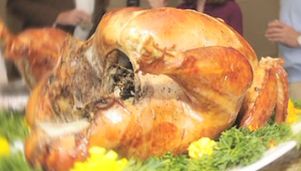Operations Management: Focusing on Production Efficiency & Customer Satisfaction
After you watch the video and know the material, click HERE for the quiz.
Operations is the lifeblood of any organization - how a business works and processes materials and services helps produce its output. In this lesson we will focus on operations and explain the elements present in it.
The Pieces of a Company
I like the ocean and I always have. There's something soothing about being at the beach, seeing and hearing the waves roll in, and feeling the sand between my toes. One of the other cool things about being at the ocean is the sea life. Now, I'm not talking about running into a great white shark or anything like that, but the sea life you see as you walk along the beach or climb out over the breakers.
 |
Some of the sea animals that I always come across are starfish in all different shapes and sizes. One of the cool things about starfish is that if they lose an arm, it will grow back (pretty cool trick, if I say so myself). And while that might be cool for a starfish, this same situation does not exist in business. You see, if business was a starfish, it would have multiple arms that could represent:
- Operations
- Finance
- Marketing
- Sales
- Human Resources
If any of these arms falls off, they cannot grow back and will most certainly damage the organization. And while they are all very important to the organization, for this lesson, we are going to focus on the operations arm of the company. This arm is responsible for ensuring the company produces a product efficiently and ultimately helps with the profitability of the company while also making sure customers are happy with their final product.
Parts of Operations Management
If you ever want to get a real-world look at operations management, just take a look at how your Thanksgiving dinner comes together. You see, operations management can be described as the overseeing and controlling of the manufacturing process to include materials planning, process planning, capital requirements, and human capital. Wow - now that was one heck of a definition. Let us break each portion of this definition down a little more to help you understand its parts.
 |
- Materials planning is the coordination of purchasing and delivery of raw materials to make the final product.
- Process planning deals with designing the processes required to ensure the product can be made in the shortest amount of time, with as little waste and as efficiently as possible.
- Capital requirements is the portion of operations management that deals with buildings and machinery.
- Human capital is the management of the employees that help run the facility.
Now that we have talked about those areas, let's put them into the Thanksgiving dinner scenario so you can have a better understanding of how they work in operations management. Anyone who has ever seen their mother or grandmother cook a Thanksgiving dinner knows there is some serious operations management going on there.
First, we have to look at materials planning. Someone, usually mom or grandma, has to make a list of all the items (materials) they will need - the turkey, of course, as well as all the other items (cranberry sauce, potatoes, green beans - man, this is making me hungry). So all the materials are identified and then purchased.
 |
All of these materials would not be available to eat at the dinner if we did not have the house and oven to cook them in. Imagine if the dinner we are thinking about had too many pieces to be made in one kitchen. We would need additional capital (more ovens or stoves) to make the dinner happen - these are our capital requirements. You can see that this can be discussed when we are looking at the materials planning. So, for example, if we have one oven and need three turkeys, we obviously have a capital problem (not enough ovens). So as a company looks at the materials planning, they have to make sure the process they have can accept or use all the materials coming in and that there is enough capital (machinery, etc.) to process all the materials coming in.
 |
Finally, we have how many cooks are involved in this dinner, or human capital. Now, I don't know about you, but when Thanksgiving went down at my house, it was like watching a wrestling match between all my aunts. Which one would cook what, who would be responsible for what, etc. was a sight to behold. But the one thing that was obvious is that we had enough human capital (people to do the job) to get the dinner done. If we didn't, then all the planning, processes, and material in the world would not get all that turkey on the table. It is a pretty involved process, but when we look at it in steps and break it down, we can understand how the individual parts make the whole.
A Narrow Part of the Company
What we just discussed are the facets of operations management. As you can see from what we just discussed, it focuses on the process of making materials, labor, and capital goods into some sort of finished product. Operations management does not care about the inputs or the outputs, just that there is some sort of operation that happens to make a finished product appear.
Old and the New
As we go back in time, operations management was all about getting a product out the door. Assembly lines and automation were the words of the day, and production (making more products in a faster way) was what operations management was all about. This started with Henry Ford and grew and grew into more and more production facilities.
However, while operations management is still focused on production, it's now more oriented toward the quality of the product. No longer can companies just put out a product, but rather they need to put out a product that is of good quality and can last. Competition is harder, and to survive, a company must not only produce a product but produce a good product that can stand up against its rivals.
 |
Oddly enough, one of the driving forces for this is social networking and the Internet. Now, if a product is not good, an individual can go online and tweet, post, text, or blog to let everyone know the product was not good. Thus, they tell someone, who tells someone else, and so on and so on until the reputation of the company and its products is over. Thus, while operations management is a process, that process has shifted to not only producing product but also producing a good product so the company can grow and thrive.
Lesson Summary
Our starfish company does indeed have different arms:
- Operations
- Finance
- Marketing
- Sales
- Human Resources
But these arms must all work together to make the starfish, for lack of a better word, live. And one of the most important aspects of our starfish is the operations arm, which focuses on:
- Materials planning: the coordination of purchasing and delivery of raw materials to make the final product
- Process planning : designing the processes required to ensure the product can be made in the shortest amount of time, with as little waste and as efficiently as possible
- Capital requirements: the portion of operations management that deals with buildings and machinery
- Human capital: the management of the employees that help run the facility
All of these elements help the organization do what it has to do, and that is produce a quality product. Now, if you'll excuse me, I'm going to get some leftovers before Uncle Tony eats all of them.